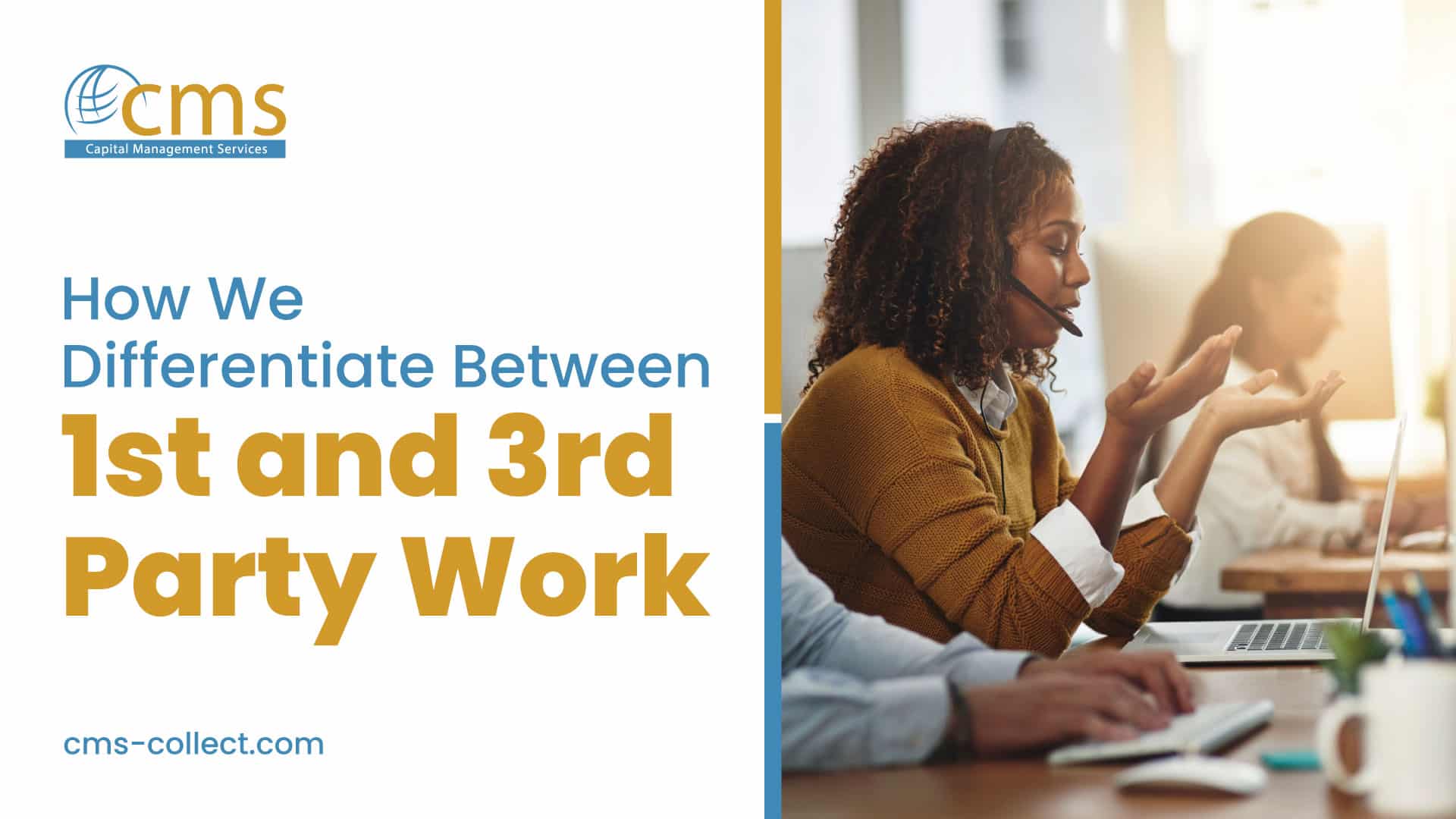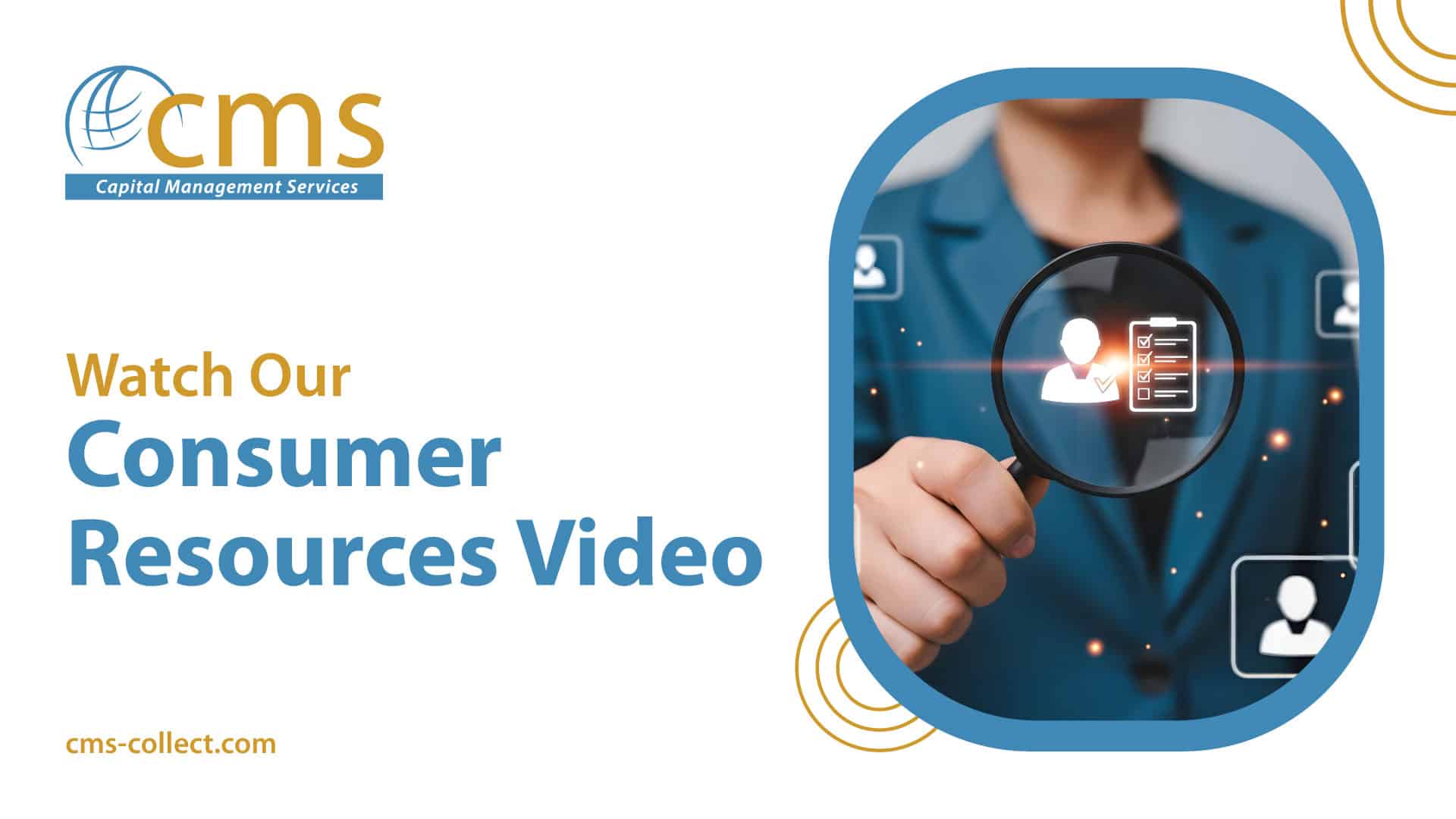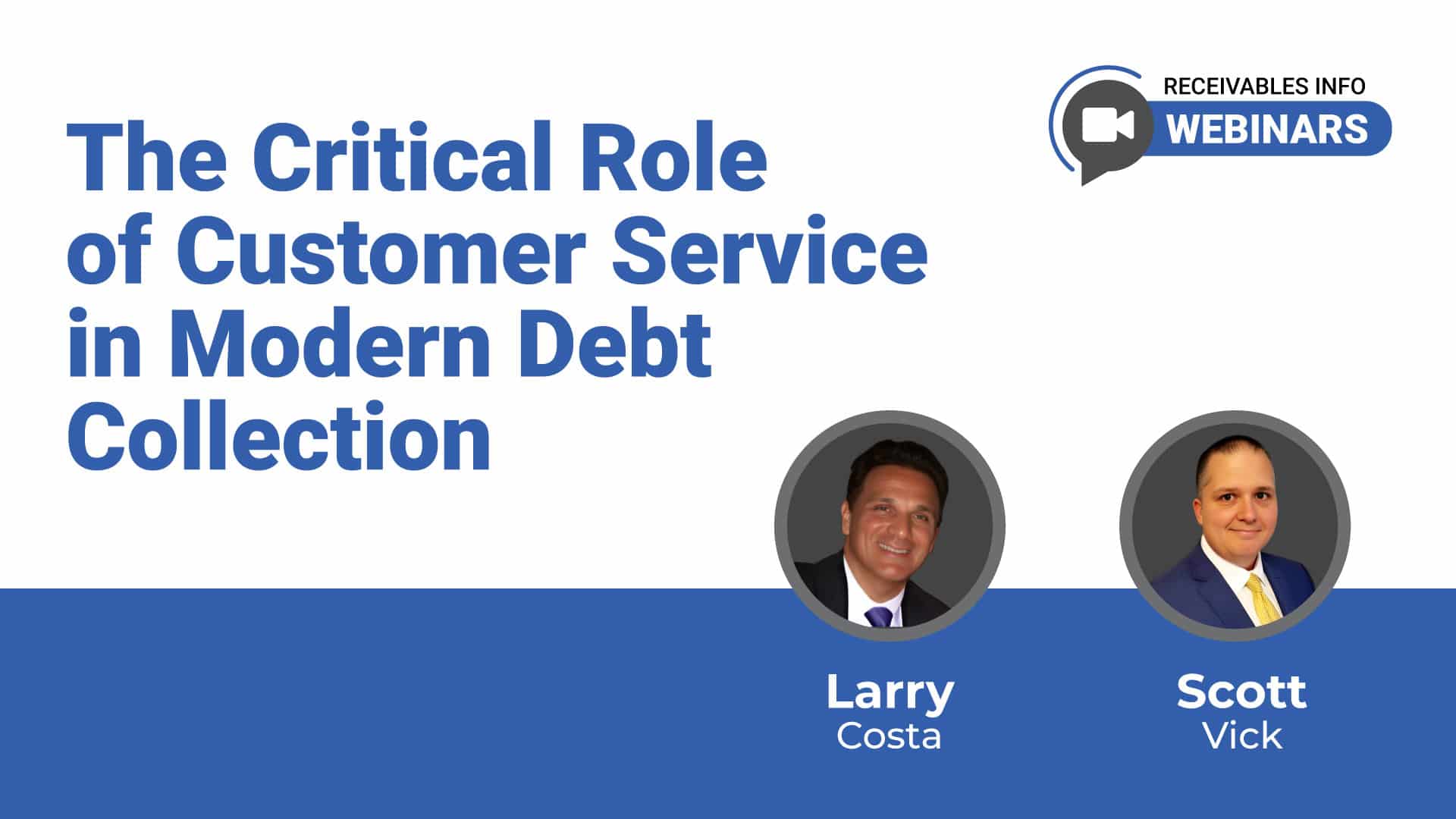
How We Differentiate Between First & Third Party Work
By Larry Costa, President at Capital Management Services, LP
First party and third party collections are similar but distinctly different. For businesses operating in the third party space who are interested in exploring opportunities in the first party space, this article will provide guidance from the perspective of a business leader experienced in both.
As a general introductory recap, it’s important to note that the key difference between 1st/3rd party collections is the stage of delinquency, which drives a couple of other differentiating factors: the organization the collector is representing and the approach of the collector.
Opportunities in First Party Collections
For an organization established in third party collections that is looking to scale and diversify, a natural area of potential growth is in expanding to first party collections. The best place to start seeking first party work is with existing clients. This is true for a couple of reasons.
Leverage Current Relationships
Firstly, an RFP submitted to a creditor by an organization with no experience in first party work is likely to be automatically disqualified. This is primarily because the customer service and brand protection aspects of first party collections are paramount, and creditors need to know your business is trustworthy for the tasks at hand. Starting with a client whose trust you have already earned is an ideal way to “dip your toes in the water” rather than diving in unprepared and possibly regretting it and/or damaging the reputation of your business.
Utilize Existing Infrastructure
If you already have the facilities and infrastructure in place for a successful call center operation, you may be interested to explore more ways to utilize it. Similar to a restaurant with a kitchen and dining area that is already established and up to code, it makes sense to consider serving after hours to get more bang for your buck. While it’s true that the transition of expanding into first party work is somewhat natural, it’s also not to be underestimated.
Plan Ahead
Where relationships already exist, the transition to adding first party work to your company’s repertoire will be smoother and the selling point is stronger. The prospect of working with fewer BPOs and reducing the fractionalization of portfolios has built-in appeal to creditors. It can be a win-win scenario if the quality is there. Preparing your agents and organization to meet these challenges takes forethought and planning ahead. This might mean simply initiating a conversation with a current client about what other type of work they have available and what it would take to get it. Getting to know the landscape and learning what makes the most sense before tailoring a plan is far more efficient than making plans blindly that may not work out.
Types of First Party Collections
In the world of first party collections, there are different subcategories of work you can get for your business, including fully integrated, partially integrated, and hybrid. For each of these, there is typically a “desk fee” form of fixed compensation based on a certain rate per productive hour. Incentive bonuses are occasionally available but more often than not, the pay structure is fixed and predictable.
Fully Integrated
In fully integrated first party collections, your agents are in the creditor’s queue. Agents are truly working under the umbrella of the creditor, using their dialing, their scripting, and their strategy. Compliance, customer service, and brand protection are of utmost importance—as always of course but especially so in this scenario. An agent going off-script or “outside the rules” could be extremely damaging and cost you the client, so it’s important to choose the right people for the job.
Partially Integrated
This is a more hands-off approach on the creditor’s part, but the concept is still generally the same. It feels a bit more “in-house” because creditors expect the BPO in this situation to use their own dialing platform and strategy. Still, it’s important to communicate expectations upfront to establish goals, and creditor brand protection remains critical.
Hybrid
Another type of first party collection work is more of a hybrid approach between first and third party collections. An example would be a mixed portfolio from a single client that includes both freshly delinquent and charged-off accounts. The accounts all get worked on your internal system from early to late stage buckets of delinquency, and your organization drives the strategy. In a hybrid scenario, it’s still important to keep first and third party work separate because of the transition in approach and the entity your agents are representing.
Common Themes in First Party Collections
Quality is King
The primary commonality of all types of first party work is that agents are representing the creditor directly as an extension of the organization itself as opposed to a third party collector collecting in the name of their own business on behalf of their creditor clients. Because of this, brand protection is even more important. Quality, compliance and reputation are all absolutely critical when representing a client as a first party.
Clarify Client Goals
As with third party work, there will always be client expectations and KPIs to meet. These will include things like talk time, wrap time, etc., but the specific goals will vary and must be discussed and clarified with the client prior to engagement. For instance, what do they want to achieve with their portfolio? Is the focus on getting customers current, liquidating the portfolio, or something else? In most cases, the primary focus is designed around preventing charge-offs.
Establish Payment Structure
For businesses and agents alike, it’s important to keep in mind that first party work is generally going to provide fixed, predictable, stable revenue. Sometimes there are bonuses available for reaching certain goals or KPIs but overall, compensation will be much less variable than third party work. It’s important to price services to be as revenue-neutral as possible to the bank or creditor and profitable to your organization.
Implementing Operations
If you do begin to build out operations for first party work, it’s important to remember that those banks or creditors are now counting on you for their customers. Infrastructure must be built for success. Technology needs to be set up with diverse suppliers to prevent a single point of failure (e.g. two fiber lines from two separate providers so you don’t fail if one line goes out).
Maintaining Separation
Separate Spaces & Agents
With such similar but different work, it’s best to keep first party work completely separate from third party work. Capital Management Services, for example, maintains different facilities altogether for third party and first party work. Dedicated agents and work spaces will help to ensure top quality and prevent unnecessary mistakes. Even the atmosphere, pay structure, and incentives will be unique between the two types of work.
Separate Training
The first party world is much more like customer service and requires a different approach. Different personalities and skill sets tend to thrive in the two different approaches. While agents get more bonus opportunities in third party work, there is generally a higher pressure to perform once contact is made since consumers are harder to reach. First party work has far more touch points because consumers are far more likely to answer the phone on day 5 of delinquency than, for example, day 180. Therefore, the accounts are more fresh and the client will have a greater vested interest in them. In general, it takes about three months to train a good first party agent.
Separate Hours
Some first party work, especially if expanding beyond collections and into customer services, will require after hours support. If you’re looking for more first party work, it may help to ask your client, such as a bank or regional creditor, what else you can do that they don’t want their highly skilled people doing or if there is after-hours work they need help with. Banks generally don’t want to maintain evening hours, especially regional banks. Services like after hours support and customer services work can all become possibilities for expanding your first party work beyond collections and payments.
Learn More
For more on this topic, view previous articles and videos on Receivables Info:
- Receivables Roundtable: Larry Costa on 1st and 3rd Party Differences
- Main Differences Between 1st and 3rd Party Work
- Keep 1st and 3rd Party Collections Activities Separate
About Capital Management Services, LP
Capital Management Services LP is a nationally licensed collection agency headquartered in Buffalo, NY that provides the highest quality of proven recovery and project solutions across the financial industry. We maintain our reputation as a proven leader and performer through our attention to detail and tailoring our strategies to meet the unique needs of each portfolio or project. We are proud of our ability to consistently surpass all industry standards for quality and provide outstanding services that add strategic value to every client partnership.





